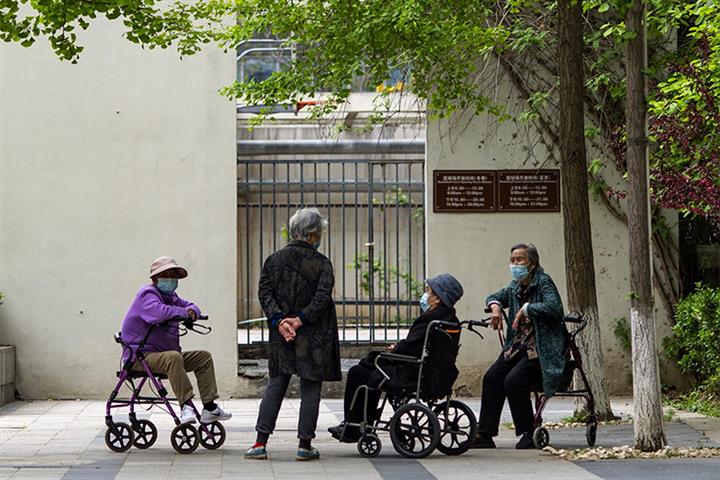 China’s Old-Age Dependency Ratio Swelled to One to Every Five People of Working Age Last Year
China’s Old-Age Dependency Ratio Swelled to One to Every Five People of Working Age Last Year(Yicai) Dec. 15 -- As China’s population ages, the country’s senior citizen dependency ratio, which measures the number of retired elderly people to the working-age population, has expanded to one old-aged person for every five of employable age from one in eight in the past decade.
Last year, the ratio for senior citizens aged 65 and above to the working population, or those aged between 15 and 64, advanced 9 percentage points from 2012 to 21.8, meaning that every five people of employable age need to provide care for one old-aged person, according to a report released by the Ministry of Civil Affairs yesterday. Back in 2012, the old-age dependency rate was 12.7 percent.
When including minors under 15 years old, the dependency ratio jumped to 46.7 percent last year. In seven provincial-level regions, including Henan, Guangxi Zhuang Autonomous Region, Guizhou and Shandong, the ratio topped 50 percent.
These seven regions are the source of much migrant labor that heads to other provinces to find work. This makes the burden of elderly care on those of working-age left in the regions heavier. But in three of the regions, namely Henan, Guangxi and Guizhou, the ratio of minors was more than 30 percent, meaning that their populations remain relatively young.
In another seven provincial-level regions, the dependency ratio fell below 40 percent. This includes economic hubs such as Beijing and Shanghai as well as Guangdong province which absorb a lot of young migrant labor from other parts of the country. It also includes places with low birth rates, such as the northeastern regions of Heilongjiang and Jilin provinces as well as Inner Mongolia Autonomous Region, which results in fewer children, but an older demographic.
Editors: Dou Shicong, Kim Taylor